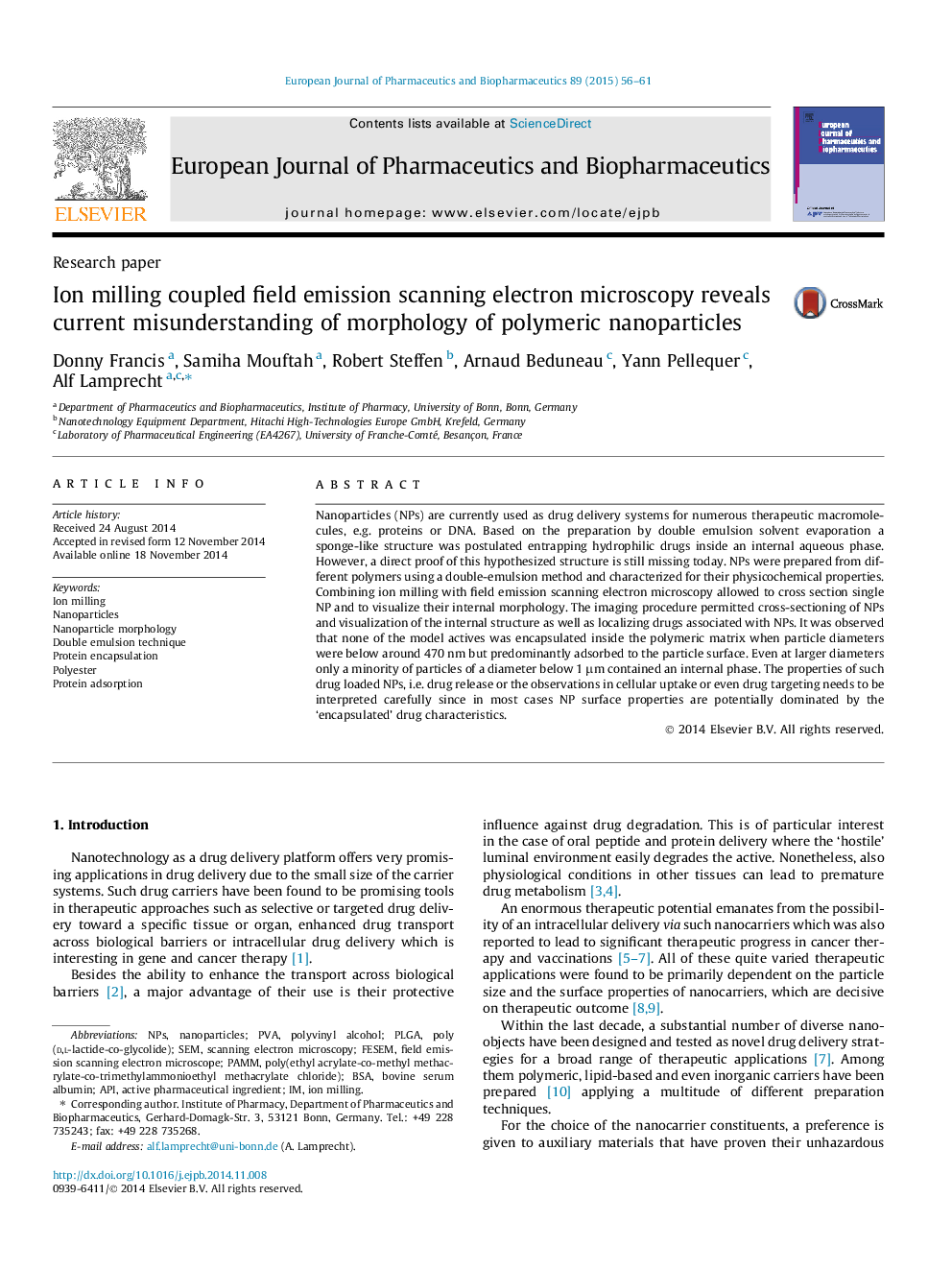| Article ID | Journal | Published Year | Pages | File Type |
|---|---|---|---|---|
| 2083425 | European Journal of Pharmaceutics and Biopharmaceutics | 2015 | 6 Pages |
•Ion milling–scanning electron microscopy permits nanoparticle cross-sectioning.•Existence of inner aqueous phase of polymer nanoparticles is size-dependent.•Model protein is mainly located at the particle surface according to morphology analyses.
Nanoparticles (NPs) are currently used as drug delivery systems for numerous therapeutic macromolecules, e.g. proteins or DNA. Based on the preparation by double emulsion solvent evaporation a sponge-like structure was postulated entrapping hydrophilic drugs inside an internal aqueous phase. However, a direct proof of this hypothesized structure is still missing today. NPs were prepared from different polymers using a double-emulsion method and characterized for their physicochemical properties. Combining ion milling with field emission scanning electron microscopy allowed to cross section single NP and to visualize their internal morphology. The imaging procedure permitted cross-sectioning of NPs and visualization of the internal structure as well as localizing drugs associated with NPs. It was observed that none of the model actives was encapsulated inside the polymeric matrix when particle diameters were below around 470 nm but predominantly adsorbed to the particle surface. Even at larger diameters only a minority of particles of a diameter below 1 μm contained an internal phase. The properties of such drug loaded NPs, i.e. drug release or the observations in cellular uptake or even drug targeting needs to be interpreted carefully since in most cases NP surface properties are potentially dominated by the ‘encapsulated’ drug characteristics.
Graphical abstractFigure optionsDownload full-size imageDownload high-quality image (110 K)Download as PowerPoint slide
